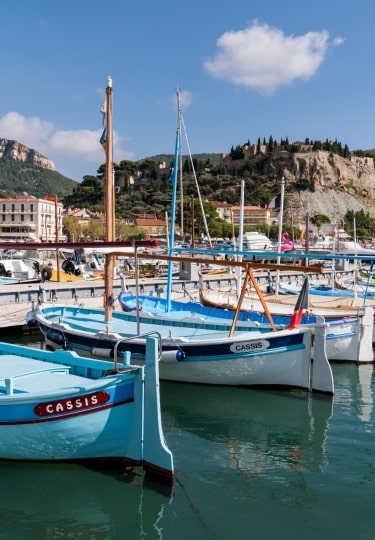Spring to fall is the best time to visit France, with summer seeing the highest temperatures, especially in the near-sizzling southeast.
The warmer days, however, mean considerably more visitors, so for a slightly less busy experience, the shoulder season months of May, September, and October may be more tempting to experience the beaches, museums, and cultural attractions with more space to yourself.
Visiting France By Season
Summer
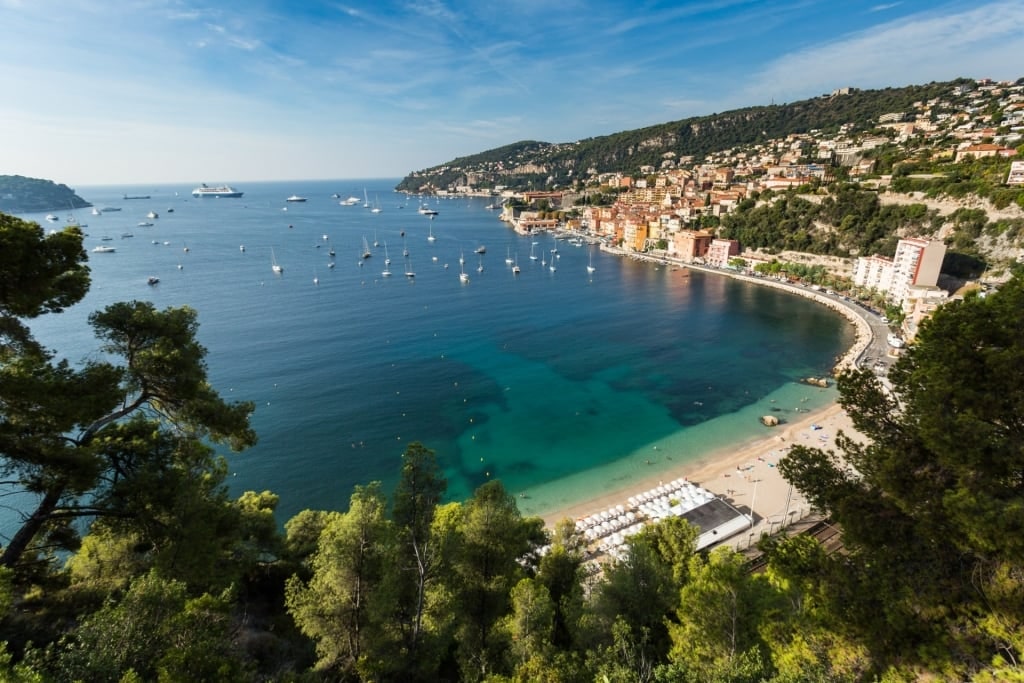
Villefranche
Late June to late September constitute France’s summer months, with consistently warm temperatures and nearly 16 hours of daylight in July.
Temperatures range from 55° to 79°F (13° to 26°C) in Paris, while the Côte d’Azur is hotter still, thanks to the Mediterranean climate, with a range of 62° to 84°F (17° to 29°C).
July is a beautiful time to head inland from Marseille to see the lavender fields in full bloom around Provence, while a packed calendar of festivals, celebrations, and events makes summer captivating across the country.
Undoubtedly, these months are the best time to visit France’s beaches, with sun-kissed sands, reliable clear blue skies, and a delightful outside-living atmosphere taking over the coastal cities.
August is a strange month, as many locals (including some hospitality businesses) take their vacations, often for a whole month, so the ambiance can seem a little different, depending on where you visit.
Fall
Fall in France is officially between late September and late November, although many people notice a change in atmosphere and climate from early September.
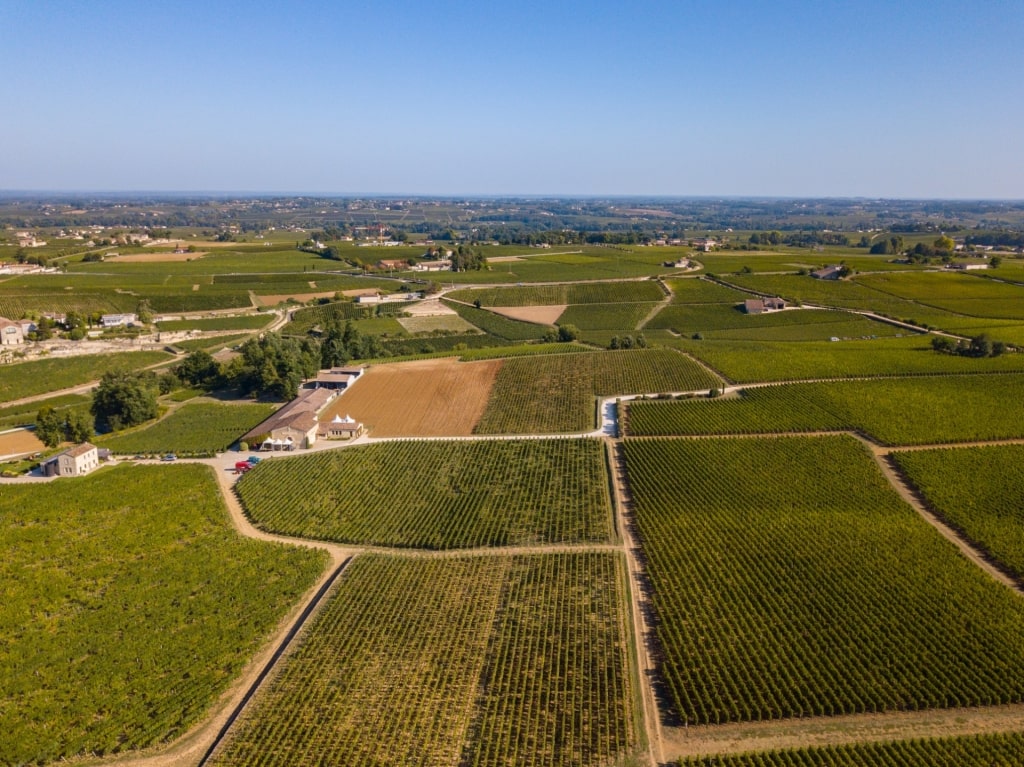
Bordeaux
This is the best time to go to France for colorful foliage around the Bordeaux countryside, especially in September when the wine harvest starts.
If you’re visiting during these months, expect temperatures around 43° to 69°F (6° to 21°C) in Paris, while Corsica’s island climate ranges from 46° to 77°F (8° to 25°C).
Post-harvest, a more laid-back vibe takes over the nation, as the focus becomes more on indoor events. The major cities are, of course, still brimming with culture, and some final warm days before winter mean the emptier southern beaches are still appealing.
Read: Best Places to Visit in Europe in September
Winter
Other than during the lead-up to Christmas, when decorations, markets, and celebrations light up the streets, winter in France (December to March) isn’t the best time to visit France—unless you’re heading to Nice Carnival in February. Or the ski slopes of the Alps, of course.
Temperatures fall, with 37° to 69°F (3° to 55°C) common in Paris, resulting in winter-chic outfits and cozy candlelit dinners. The gray skies and downpours mean an umbrella is essential when packing, as is a sense of imagination to brighten up overcast photos. Still, the reduction in travelers means slightly fewer visitors, especially if you avoid the weekend city-break goers.
Spring
Venture to France in spring (late March to late June), and you’ll enjoy temperatures ranging from 41° to 84°F (5° to 23°C) in Paris or a warmer 46° to 79°F (8° to 26°C) along the southeastern French Riviera.
Mid to late spring is perhaps the best time to visit France, regardless of whether you’re heading south or north. Wandering along the banks of the Seine in spring is as romantic as you’d imagine, and the lavender fields of Provence start to blossom in June, creating a purple panorama of delightful countryside.
Further south, the Mediterranean beaches around Cannes, Marseille, and the island of Corsica are beginning to look more inviting, while cycle rides through the rolling vineyards around Bordeaux have a special allure.
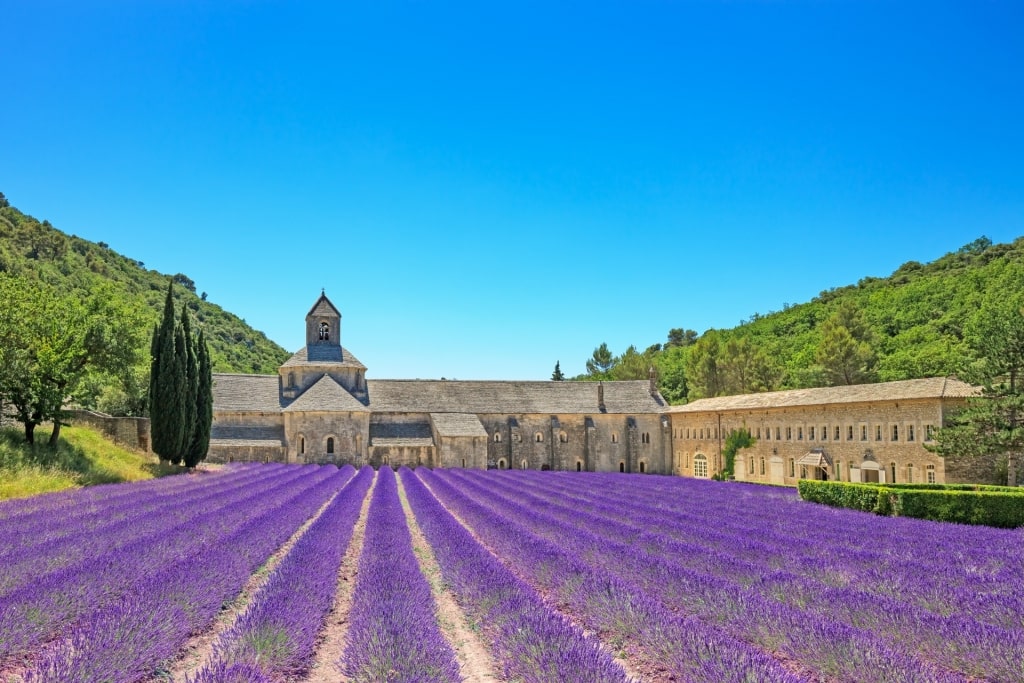
Marseille
When Is Rainy Season?
France’s rainy season mainly falls in the winter, although lighter, shorter showers can arrive throughout spring and fall, especially in the center and north of the country.
Luckily, around Paris or Bordeaux, there are plenty of cultural and culinary attractions to enjoy on a rainy day, from the world-famous Louvre Museum to tasting some of France’s most acclaimed wines.
When the rainy season does come around, showers can be heavy but usually thin into gray-clouded skies after a few hours. In the south of France and on the island of Corsica, the rainy season is less intense, with fewer showers and storms.
Rain falls as snow on higher ground, across the Alps and the highest mountains of Corsica.
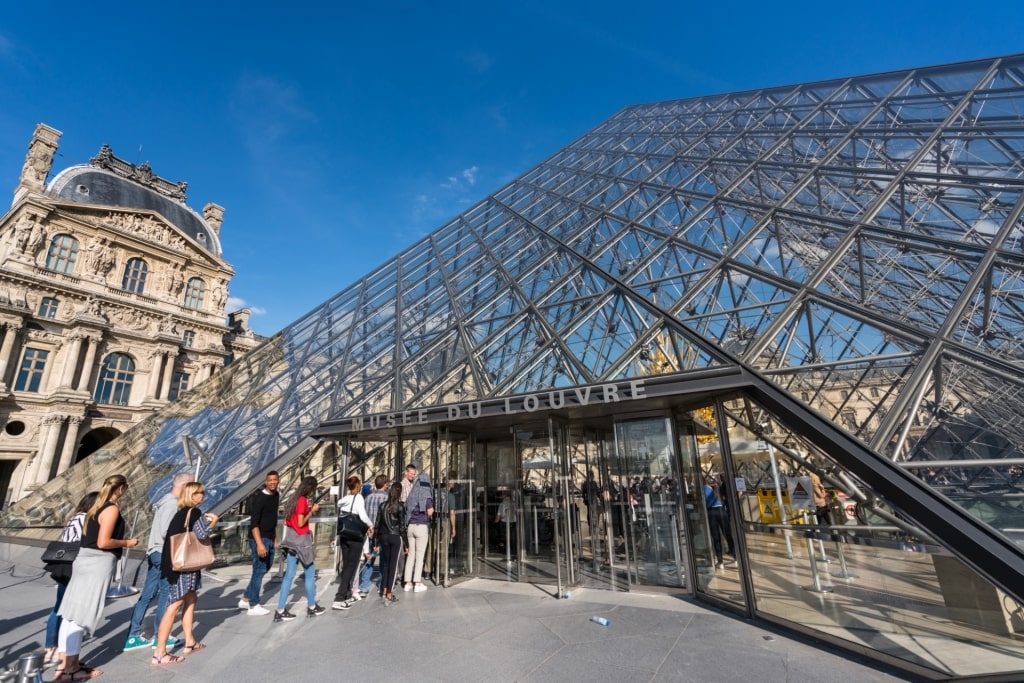
Louvre Museum, Paris
When Is High Season?
The peak season for travelers to France is during the summer, especially July and August, although the school holidays over Easter (usually April) and October, and the pre-Christmas weeks can also see an increase in visitors.
During the high season, the beaches around Nice, Marseille, and Corsica are undoubtedly busy. But the joy of al fresco dining, outside cultural events, and the near-guaranteed sunshine more than compensate for the extra towels on the sands.
In cities such as Paris, Bordeaux, or Le Havre, the crowds don’t necessarily feel any busier than during the shoulder season. However, you may wish to pre-book museum and attraction tickets to avoid the slightly longer queues.
Even with the extra visitors, summer is still one of the best times to go to France, as the long days really bring outdoor café culture to the forefront, artistic performances to the streets, and in general, you’ll find a more joyful atmosphere in the air.
When Is Shoulder Season?
Shoulder season in France is considered to be the spring months (April to June) and earlier fall months (September to October). If you visit during this period, you can expect relatively mild weather, while the Côte d’Azur still enjoys many warm days.
In the south, around Nice or Corsica, finding a more secluded beach corner will be easier. In Cannes, the film festival is usually hosted in May, meaning the city comes alive with both celebrity sightings and crowds, making it one of the peak seasons for this coastal destination.
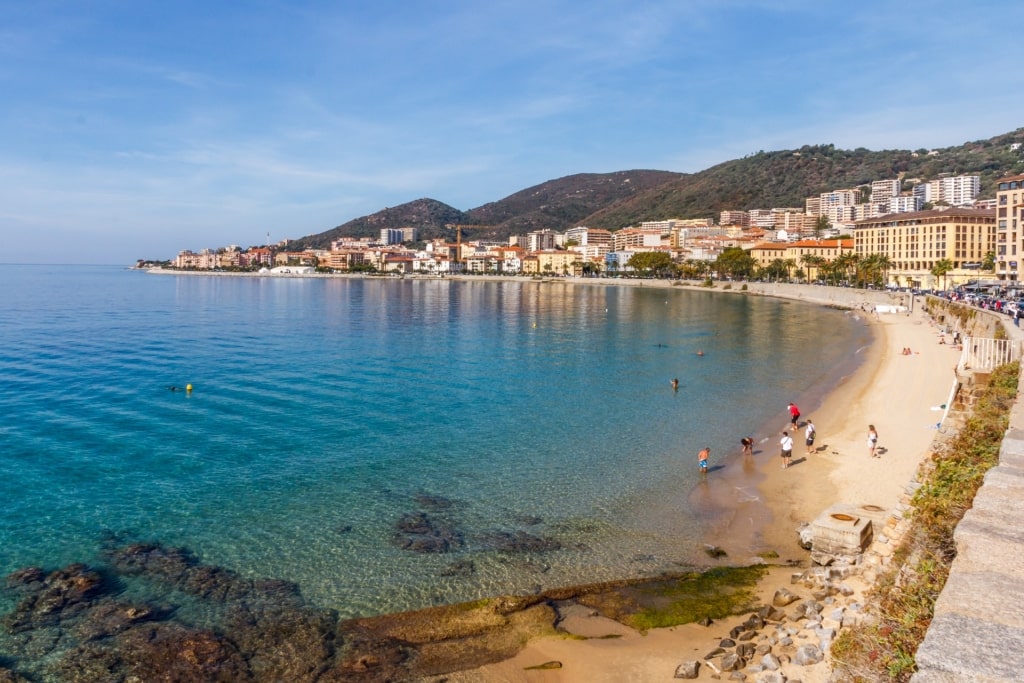
St. Francois Beach, Corsica
When Is Low Season?
The country’s low season is between November and March, although Christmas festivities, markets, and shopping opportunities increase visitor numbers in December.
That said, France is a popular year-round city break destination thanks to its rich cultural heritage, so places like Bordeaux, Nice, and especially Paris will still feel relatively busy.
Eager to indulge in France’s culinary genius and explore the nation’s historical sights? Browse Celebrity’s France cruises to find your perfect itinerary.
